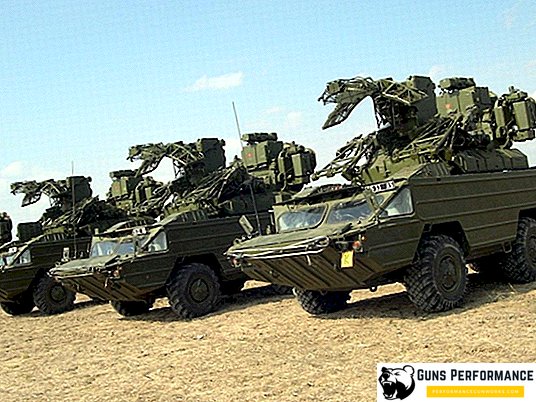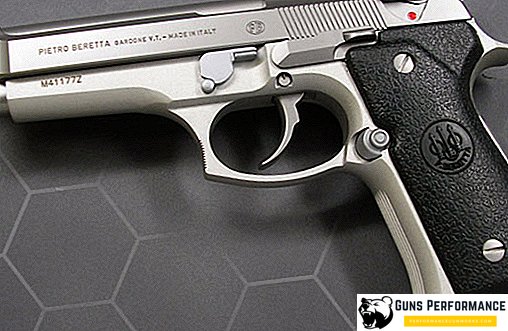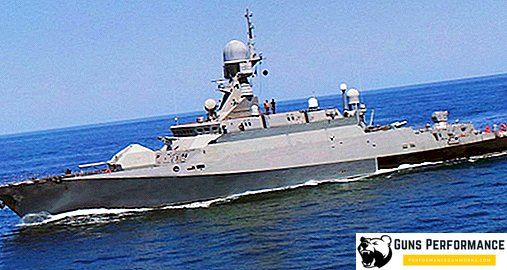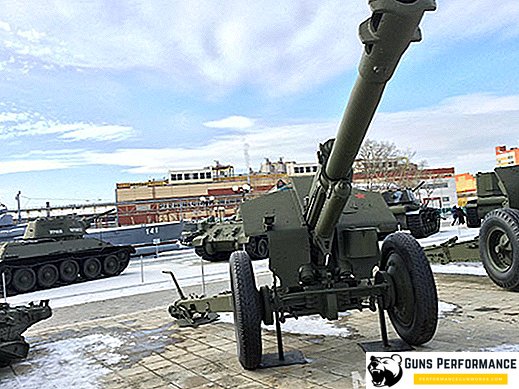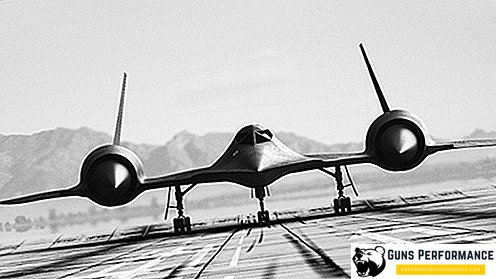
The “Osa” air defense system is a Soviet short-range anti-aircraft missile system, which was put into service in 1971. It was specifically designed to protect against tank and motorized rifle attacks from the air, both directly during hostilities and on the march. This all-weather, self-propelled and autonomous air defense system is intended for the destruction of enemy aircraft and helicopters, its UAV, as well as cruise missiles. The air defense system "Osa" is capable of performing its tasks even in conditions of significant electronic countermeasures of the enemy.
Despite its old age, the Osa missile system is not only still used by the Russian army, but is also the most numerous weapon of the military air defense. In 2007, the armed forces of the Russian Federation exploited about 400 such complexes. Currently, the OSA Osa is operated by the armed forces of the former Soviet republics, as well as by the armies of Poland, Bulgaria, Greece, Cuba, India, Jordan, Syria, and Ecuador.
In total, since the beginning of mass production, Soviet industry produced about 1.2 thousand of these weapons. It lasted until 1988.
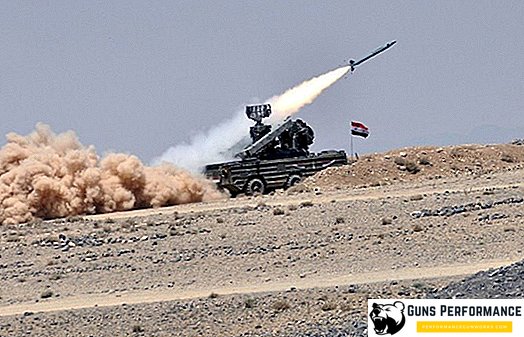
The Osa air defense system was repeatedly upgraded, both in the Soviet Union and in other countries. There are several modifications: the Soviet "Osa-AKM" and "Osa-AK", the Belarusian complex "Osa-1T", the Polish SA-8 Sting.
The Osa anti-aircraft missile system has repeatedly participated in actual hostilities; it can be said that none of the major military conflicts of the last decades of the last century could do without the participation of this air defense weapon. For the first time in real conditions, it was used in the Middle East in the early 80s. Then there was Angola, the Persian Gulf War, and the 2008 Russian-Georgian war. Currently, the OSA "Osa" is used by both parties to the civil conflict in Syria.
History of creation
The need to create a new anti-aircraft complex, which could effectively cover ground units from air attacks from low altitudes, arose already in the late 50s of the last century.
The fact is that by this time the tactics of combat aviation had seriously changed: the widespread use of anti-aircraft guided missiles forced the aircraft to descend from dizzying heights almost to the ground itself. Attacking from small and extremely low altitudes, airplanes and helicopters posed a serious danger, the troops were most vulnerable on the march. We needed a specialized air defense missile system, which could deal with such air targets. Attempts to create such an air defense system were made in different countries, but the best result was achieved by the Soviet designers.
In October 1960, a resolution of the USSR Council of Ministers appeared in which it was ordered to begin work on the creation of the Osa anti-aircraft missile system (at the development stage, the project was called the Ellipse). To him were made very serious demands.
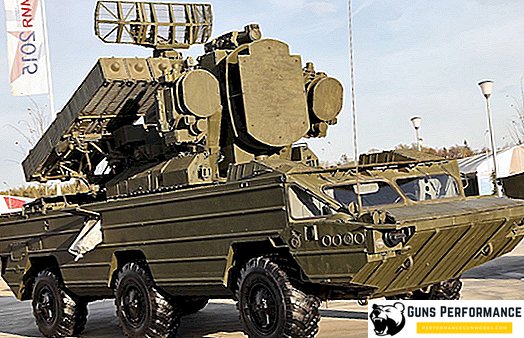
The new air defense system should have confidently hit targets at altitudes from 50 to 5 thousand meters, flying at speeds of up to 500 m / s at a distance of up to 10 km. For that time it was a very nontrivial technical problem. In addition, the designers were instructed to create a complex with a high degree of autonomy, in which all the combat elements of the air defense missile system would be located on the same chassis: guided missiles, radar stations, as well as communications, navigation, and power sources. Another customer wish was the ability of the complex to detect targets right on the move and hit them during short stops.
The military wanted the Zuru mass not to exceed 65 kg, in which case it could be manually charged by two fighters.
NII-20 was appointed the lead developer of the project, and V. Taranovsky, who was later replaced by M. Kosichkin, was appointed chief designer. The Tushinsky Machine-Building Plant was involved in the creation of the rocket, and the launcher was engaged in the design bureau of compressor engineering. Kutaisi Automobile Plant was commissioned to develop a self-propelled chassis. Simultaneously with the land complex, work was underway to create a modification of the "Osa-M", intended for the country's Navy.
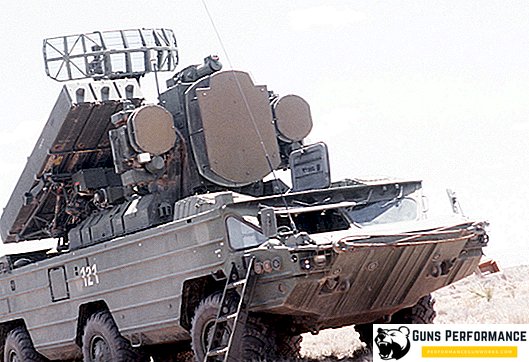
The project was moving very hard, by 1962, he almost did not budge. Serious inconsistencies between the various elements of the complex arose already at the stage of the preliminary project.
In order to understand the technical complexity of this project, it can be said that at about the same time the Americans tried to create a similar autonomous anti-aircraft complex. They planned to place all of its elements on the tracked chassis of the M-113 armored personnel carrier. The total weight of the car should have been 11 tons, which would allow it to be transported by air transport. For the American air defense missile system, a 55 kg rocket with an active homing head and a range of 15 km was developed. The required characteristics were not achieved, so the project was closed in 1965. Development of a similar anti-aircraft complex engaged in other countries. The first were the British. They managed to create ground-based air defense systems "Tiger Cat" and "Rapier", but in terms of their tactical and technical characteristics (TTH) they were significantly inferior to the Soviet "Osa".
Failures during the implementation of the Soviet project cost posts not only to several chief designers, in the course of the work had to change the whole organization that could not achieve results.
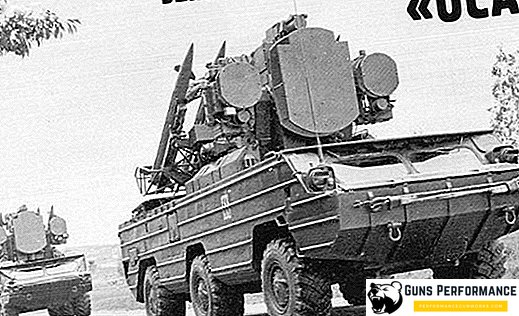
The most difficult task was the creation of a guided anti-aircraft missile, and Tushino Machinery frankly failed to cope with it. Therefore, in 1964, this work was entrusted to the OKB-2, and the Bryansk Automobile Plant was engaged in the creation of a self-propelled chassis. In addition, the chief designer of the entire project was replaced.
In 1970, the tests of the complex finally began. They ended successfully and in 1971, the Osa air defense missile system was put into service.
Description of construction
The “Osa” air defense missile system is a short-range air defense system that is capable of striking virtually any airborne targets at altitudes from 50 to 5 thousand meters at a range of up to 10 km even under conditions of significant enemy electronic countermeasures. In addition, the complex has good autonomy, permeability, its deployment time is only 5 minutes.
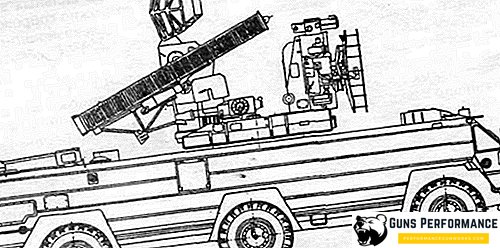
The complex includes the following combat elements:
- Fighting vehicle (BM) 9A33B, which houses the means of guidance, reconnaissance and launch of missiles;
- Anti-aircraft guided missile (Zour) 9M33.
For the full functioning of the complex also requires the following technical means:
- machine for maintenance;
- adjustment machine;
- transport-loading machine;
- test mobile station;
- group spares machine;
- ground equipment kit.
Also, the Osa complex includes the following systems: target detection and tracking stations, a counting device, a missile sighting radar, a launch automation system and an optical reticle.
The main armament of the complex is the 9M33 anti-aircraft missile. It is made according to the classical "duck" scheme, equipped with a solid-fuel engine, radio command guidance system and a fragmentation warhead. Non-contact fuse produces undermining the warhead in five meters from the selected target. In the tail of the missile are tracers to accompany it with an optical reticle. The complex can produce two missiles on the most priority targets with an interval of 3-5 seconds.
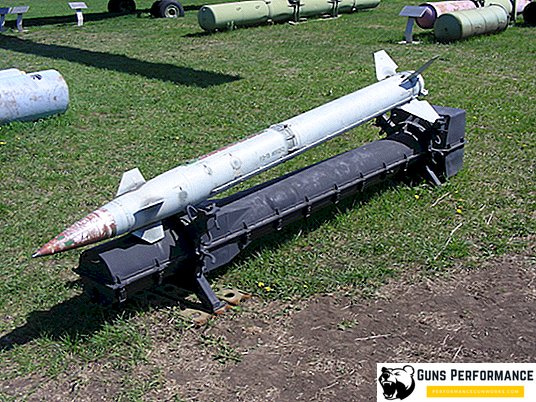
The weight of the warhead of the 9M33 missile is 15 kg, the total weight is 128 kg, and its average speed is 500 m / s. Before launching the missile defense system, it is not necessary to conduct pre-launch preparation; if the target is hit, a rocket comes out on top of it, which significantly reduces the likelihood of error.
The transport-charging and combat vehicles of the complex are made on the basis of the BAZ-5937 three-axle chassis. This provides them with an excellent level of terrain and mobility. The chassis of the complex can overcome water obstacles using water cannons. Also, the combat vehicle has navigation, topographic, power supply and communication systems, which ensures the complex a high level of autonomy. The size and weight of the elements of the complex allow you to transport it by Il-76 or by rail.
The chassis is equipped with a powerful diesel engine that allows you to accelerate to 45 km / h when driving on dirt roads and up to 80 km / h on the highway.
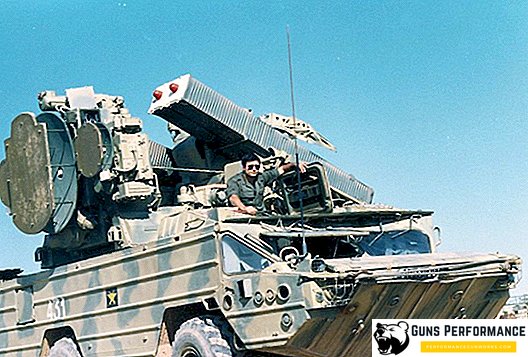
The target detection station of the Osa air defense missile system is quite reliably protected from interference. This is a radar circular view, stabilized in the horizontal plane, which rotates at a speed of 33.3 revolutions per minute. The radar antenna is able to detect an enemy fighter, flying at an altitude of 5 thousand, at a distance of 40 km. Low-altitude targets (50 meters) can be detected at a distance of 27 km.
After the target is captured, its data is transmitted to the accompanying station. It transmits the coordinates to the calculating device. The total reaction time of the air defense system does not exceed 26 seconds.
The transport-loading vehicle is capable of transporting and loading 12 anti-aircraft missiles.
The batch production of the Osa air defense system was set up at the Izhevsk Electromechanical Plant, where the combat vehicles of the complex were made. An anti-aircraft missile was manufactured for him at the Kirov Machine-Building Plant.
In 1975, a new modernized complex was adopted; it was called Osa-AK. The combat vehicle of this modification received six 9M33M2 missiles (instead of four 9M33 in the base version of the complex), in addition, the Osa-AK differed from its predecessor in more advanced characteristics.
When creating electronic equipment "Osy-AK", a new elementary base was used, which significantly reduced its dimensions and increased reliability of work. The counting device was modified, the security of electronic equipment from interference was improved.
The 9M33M2 missile received a more advanced radio-fuse, which made it possible to reduce the minimum height of damage to the enemy aircraft to 25 meters. The missile system of the Osa-AK complex was housed in a special container, which gives a warranty period of up to five years.
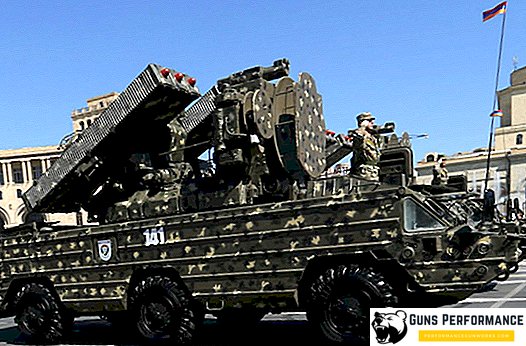
Thanks to the improvements, the level of efficiency of the complex has increased: it is able to shoot down fighter-type targets at a height of 50 meters with a probability of 0.35-0.4, and at a height of more than 100 meters - 0.42-0.85. The area of destruction of the complex and its ability to fight high-speed targets was also increased.
In 1980, an even more advanced modification of the complex, called the Osa-AKM, was adopted. It differed from its predecessors by the improved capabilities of the fight against enemy helicopters - the Soviet military took into account the experience of the Middle Eastern campaigns. Osa-AKM is capable of striking enemy helicopters practically at zero altitudes at a range of up to 6.5 km.
SAM "Osa", (as well as "Osa-AK" and "Osa-AKM") were armed with anti-aircraft regiments of motorized rifle divisions. Each such regiment consisted of five anti-aircraft missile batteries and a regimental command post. There were four Osa complexes and a command post within one battery. It turned out that each regiment had twenty combat vehicles with 80 missiles, constantly ready for battle. If the regiment was armed with modifications of "Osa-AK" or "Osa-AKM", then the number of missiles increased to 120 units - a very serious force.
Combat use and operation
The air defense system "Osa" was not only in service with the Soviet army, but was also actively exported. They were armed with numerous allies of the USSR in different regions of the planet: the Warsaw Pact countries, India, Iraq, Libya, Syria and others. Despite the fact that the mass production of "Wasps" has long been discontinued, this complex is still in service with the land forces of Russia, Ukraine, Belarus, Poland, Syria and other countries. Soon after the collapse of the USSR, 18 Osa air defense systems were sold to Greece, which became the first NATO country to adopt it.

Baptism of the complex took place in the early 80s in the Middle East. Syrians actively used the "Wasps" to counter Israeli aircraft. In 1982, the Syrian air defense and air force, almost fully equipped with Soviet technology, were completely defeated by the Israelis (Operation Medvedka 19 ″). Despite this, the Wasp showed itself in this complex theater of military operations as a very effective and reliable weapon. Even if the complex's radar was suppressed by interference, the presence of an optical guidance channel made it possible to detect and track targets. Syrian (or Soviet) anti-aircraft gunners managed to shoot down a large number of Israeli UAVs and an F-4E fighter-bomber.
The next conflict in which Osa was involved was the civil war in Angola. During the fighting, the complex managed to shoot down two unmanned vehicles and one reconnaissance aircraft.
During the first campaign in the Persian Gulf, Americans paid great attention to the neutralization of the OSA, which were in service with the army of Saddam. They considered this complex one of the most combat-ready elements of the Iraqi air defense system, especially dangerous for cruise missiles. In order to get acquainted with Soviet weapons, American special forces undertook a daring raid, during which one of the complexes was captured and taken out of the country along with documentation and captured anti-aircraft gunners.
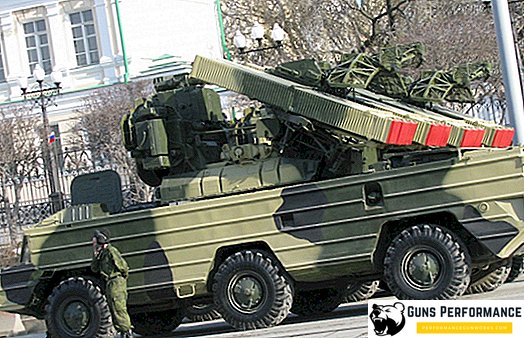
The OSA was used by both sides during the 2008 Russian-Georgian war. The Russian army managed to capture five combat vehicles as trophies.
Despite the fact that the OSA "Osa" is difficult to call a modern type of weapons, it continues to be actively exploited. For many decades of service, this air defense complex has established itself as a weapon capable of performing its tasks in the most difficult conditions.
In recent years, several options have been developed to modernize the Osa air defense system. In 2003, a Belarusian modification of the complex called “Wasp-1T” was presented. The electronic equipment of the complex was transferred to a modern elementary base, which reduced its dimensions, increased reliability and noise immunity. Belarusians managed to significantly improve the combat qualities of the air defense system, especially its ability to work on high-speed and maneuverable targets. According to the developers, the “Osa-1T” air defense missile system can effectively hit inconspicuous targets made using stealth technology.
In 2011, tests began of the Stiletto air defense missile system, a joint development of Ukraine and Belarus, created on the basis of the Soviet Osa complex.
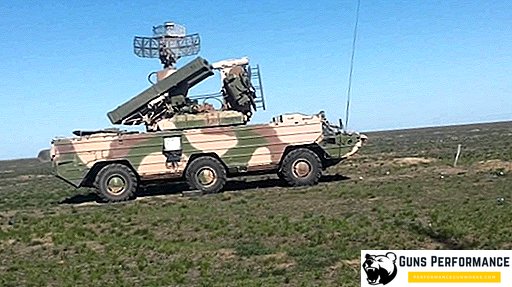
In 2003, SA-8 Sting was presented to the general public - a variant of the modernization of the Osa complex, developed by Polish specialists.
Specifications
| Missile weight 9M33M3, kg | 126,3 |
| Flight speed Zour, m / s | 500 |
| Target detection range, km | up to 45 |
| Target hitting range, thousand m | 1,5-10 |
| Height of target damage, thousand m | 0,025-5 |
| Max. target speed, m / s | 500 |
| The probability of hitting a fighter single missiles | 0,5… 0,85 |
| Number of rocket channels | 2 |
| Reaction time, sec. | 16… 26 |
| Deployment time in combat position, min | up to 4 |
| The number of missiles on a combat vehicle, pcs. | 6 |
| Max. highway speed, km / h | 70 |
| Combat crew, pers. | 4 |
